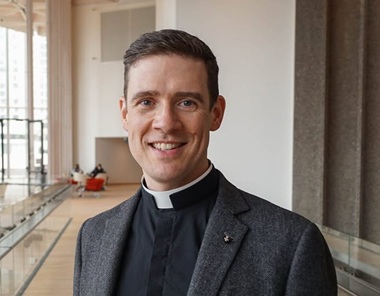
Rev. Dr. Andrew Bennett, program director for Faith Communities at Cardus, is co-author of this study.
Cardus released a report April 24 which suggests that “governments can help immigrants succeed in Canada by reaching out to faith communities.” Cardus is a non-partisan think tank “formed by the teachings of Jesus and by the Christian social thought tradition.”
The report drew heavily on input from church leaders, several of whom are from British Columbia
Following is the Cardus release.
Federal and provincial governments need to recognize churches and other faith communities as trusted partners in helping immigrants settle into life in Canada. A new Cardus report, How Governments Can Better Support Immigrants’ Integration: Insights from Church Leaders, outlines how faith leaders can be a helpful resource of governments.
“Pastors, priests and other church leaders are often on the frontlines of welcoming immigrants to Canada,” says Rev. Dr. Andrew Bennett, a report co-author [with Micah Allatt] and program director for Faith Communities at Cardus:
They can provide cultural and spiritual insights that governments would otherwise miss, they can advocate for marginalized groups in unique ways, and they can encourage communication between immigrant communities and government agencies.
How Governments Can Better Support Immigrants’ Integration: Insights from Church Leaders is based on interviews with nine pastors of Christian churches across the country that serve immigrant communities. Their churches represent Roman Catholic, Eastern Catholic, Oriental Orthodox, Evangelical and Mainline Protestant traditions.
The pastors Cardus interviewed recommend that the federal and provincial governments:
- Recognize churches and other faith communities as trusted partners in immigrant integration.
- Address the systemic barriers that immigrants face by:
- Simplifying immigration procedures through streamlined applications for permanent residency and clearer expectations regarding timelines.
- Expanding language support programs for newcomers to Canada.
- Increasing transparency in service delivery through clear and consistent communication from government agencies.
- Provide financial and structural support to expand immigrant-focused programs that churches offer, such as:
- Providing grants for programs like language classes, job training, and housing assistance.
- Supporting job creation and housing affordability, which are critical for establishing a new life in Canada.
- Expanding language services and social guidance, which enable immigrants to find jobs and access other resources.
“The breadth of Canadian churches and other faith communities is both a gift and an opportunity,” says Rev. Dr. Bennett:
They are trusted institutions within immigrant communities, serving as bridges between immigrants and broader society. By encouraging collaboration, simplifying processes, and enabling faith communities as key partners in immigrant integration, Canada can ensure that our public square is open and compassionate – all supported by respect for religious freedom.
How Governments Can Better Support Immigrants’ Integration: Insights from Church Leaders is freely available on the Cardus website.
*************************************
The report notes that three of the nine congregations represented are in BC:
- Church 2 is in urban British Columbia. The pastor noted that the church serves over 6,000 congregants from 75 countries, with services translated into 11 languages. The linguistic diversity underscores the church’s efforts to create inclusive worship experiences for immigrants.
- Church 3 is in urban British Columbia. The pastor described the congregation as having over 35 ethnicities, with an estimated 60 percent of members identifying as visible minorities. He noted that approximately 40 percent of congregants do not consider English their first language. There is significant representation from South America and Asia.
- Church 4 is in suburban British Columbia. The pastor provided detailed demographic data: 60 percent Filipino, 15 percent Vietnamese and smaller percentages of congregants of Indian, Sri Lankan, African (mainly Nigerian) and European backgrounds.
